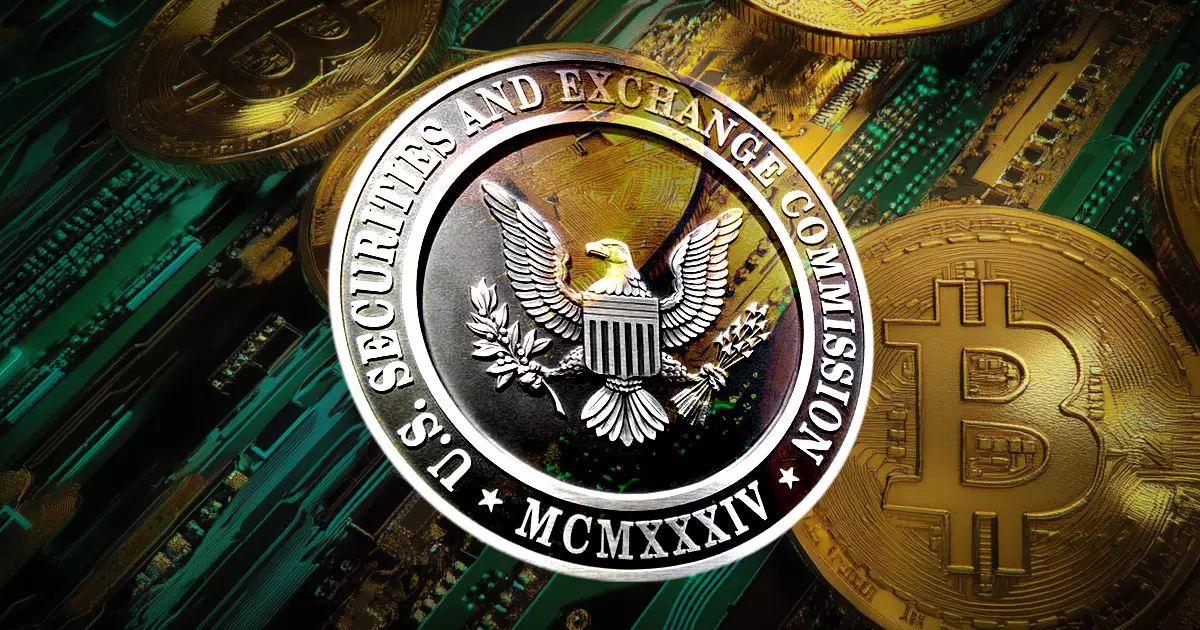The landscape of cryptocurrency regulation in the United States is evolving at a rapid pace, yet the path forward remains fraught with complexities. The recent meetings conducted by the US Securities and Exchange Commission (SEC) with industry titans like BlackRock and associations such as the Crypto Council for Innovation (CCI) reveal much about these challenges. As discussions around crypto exchange-traded products (ETPs) continue, it’s clear that institutional players are eager to influence and define the regulatory parameters, yet issues remain that could impede real progress and innovation.
BlackRock, acknowledged as a giant in asset management, brought forward discussions on in-kind redemptions for crypto ETPs, a crucial issue when it comes to liquidity and investor access. The fundamental role of ensuring that crypto remains a viable investment option lies in both regulatory acceptance and market functioning. However, one cannot ignore the potential pitfalls that come with such arrangements. The inherent volatility and complexity of asset-backed ETPs could expose investors to unforeseen risks, especially when blended with digital currencies notorious for their price fluctuations.
The Push for Staking within ETPs
Another central topic discussed involved staking, a practice critical to Proof of Stake (PoS) blockchain systems, where participants can lock their crypto holdings to earn rewards. The Proof of Stake Alliance presented various models to the SEC, seeking to balance the benefits of staking with regulatory expectations. The push for staking-as-a-service highlights a tension in the evolving crypto ecosystem—how do you marry innovation with regulation without stifling growth?
Those resistant to including staking in ETPs argue that it complicates the investment narrative. After all, while it adds potential rewards, it also introduces layers of operational risk and complicates the fund’s liquidity profile. In this respect, one must ask: does the pursuit of rewards inevitably lead to greater investor vulnerability? The argument made by representatives of entities like Jito Labs and Multicoin Capital is compelling; excluding staking could jeopardize the attractiveness of ETPs altogether. Still, it remains a double-edged sword, as the SEC weighs the real-world implications of such models against an uncertain regulatory backdrop.
Institutional Influence: A Double-Edged Sword
While there is no doubt that institutional interest is pivotal for the acceptance of crypto in the mainstream financial ecosystem, it raises questions about whose interests are truly being served. With firms like BlackRock leading the conversations, one must be cautious not to overlook smaller market participants and retail investors. The focus on regulatory clarity must not inadvertently lead to a framework that favors larger players, potentially pushing out smaller entities unable to comply with stricter standards.
The risk here is real; a market dominated by a few large institutions could lead to fewer options, diminished competition, and ultimately, a less dynamic environment for innovation. As the SEC continues to scrutinize these discussions, let us not forget that a varied landscape among players—from retail-focused crypto firms to major asset managers—offers the best potential for healthy market growth.
The Uncertain Future of Crypto Financial Products
Despite myriad talks and proposals, the SEC has yet to provide definitive regulatory frameworks for crypto ETPs, leaving many industry players in a state of apprehension. The stakes are high; not only are investors looking for assurance, but the success of crypto ETPs also impacts the broader market sentiment towards digital currencies. Investors are understandably eager for the SEC to endorse products that enable them to hedge their portfolios, yet with numerous risks unaddressed, confidence remains shaky.
One must consider whether the inertia exhibited by regulatory bodies is a response to genuine risk factors or a reluctance to embrace the innovative spirit of blockchain technology. Ultimately, while regulatory caution is necessary, it should not tiptoe into obstructiveness. We find ourselves at a crossroads, where regulators must determine whether they are guardians of market integrity or gatekeepers of innovation. The answer could well define the future of cryptocurrency in America—either as a thriving sector or one relegated to the shadows.



















Leave a Reply